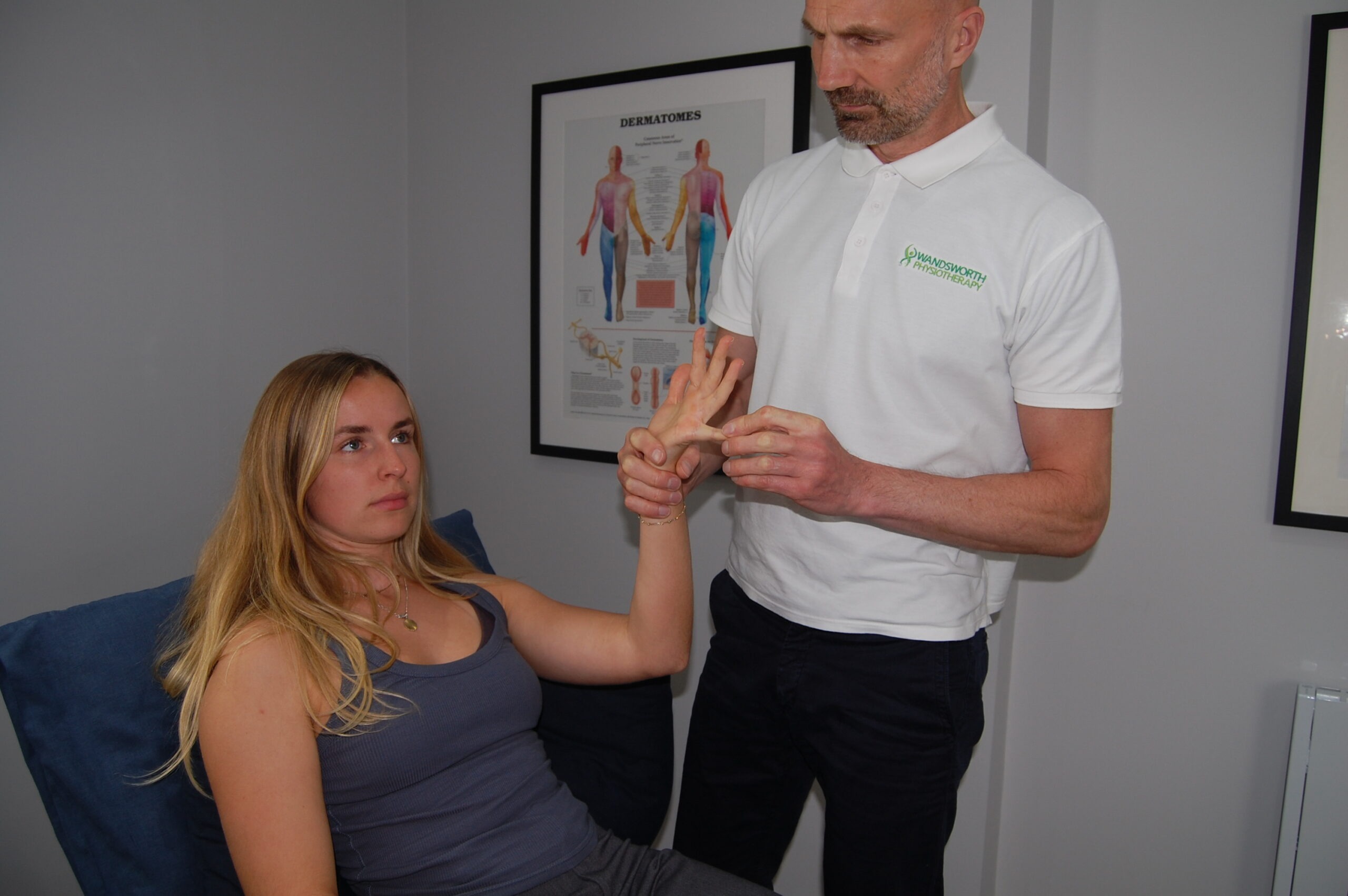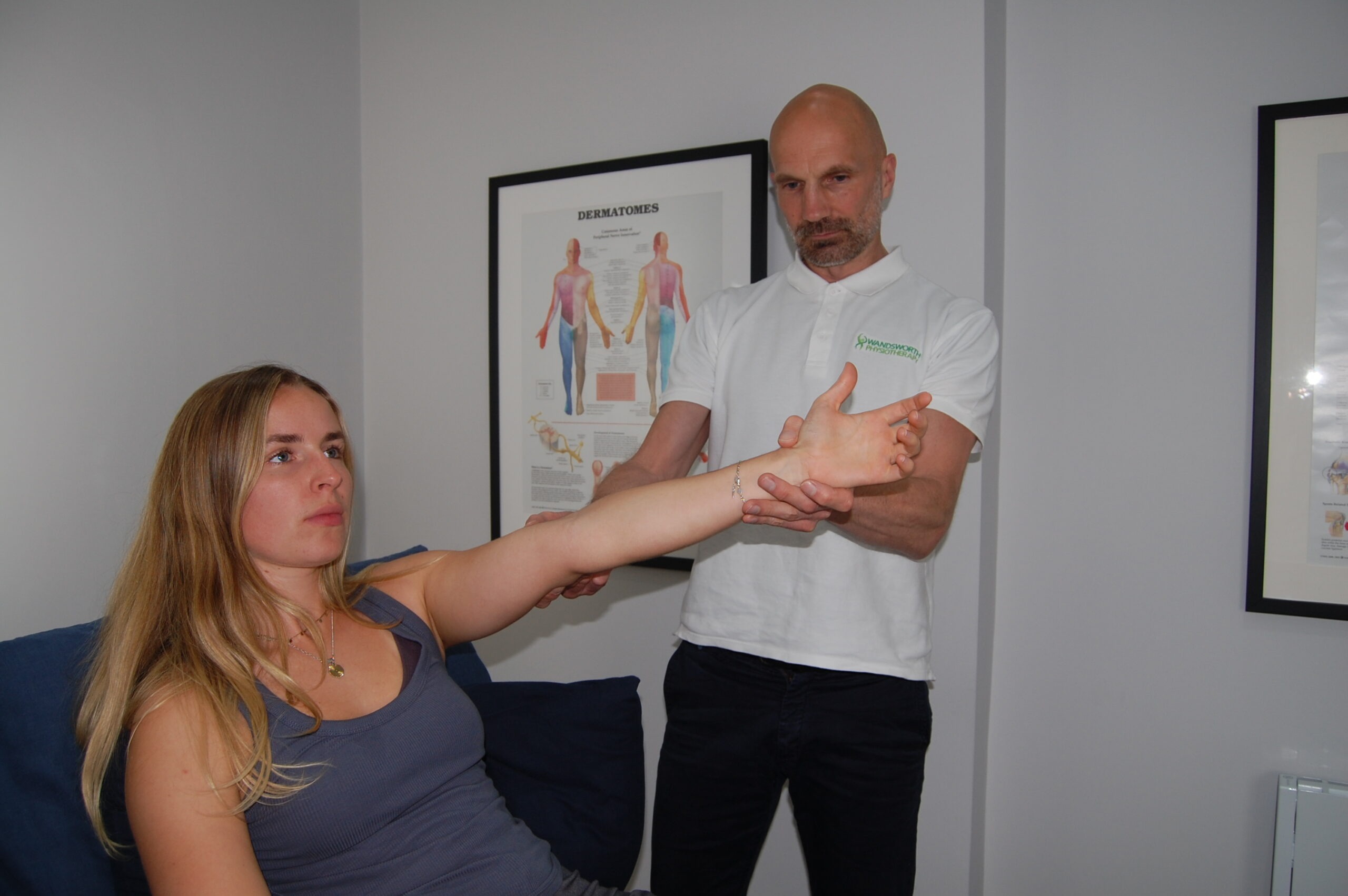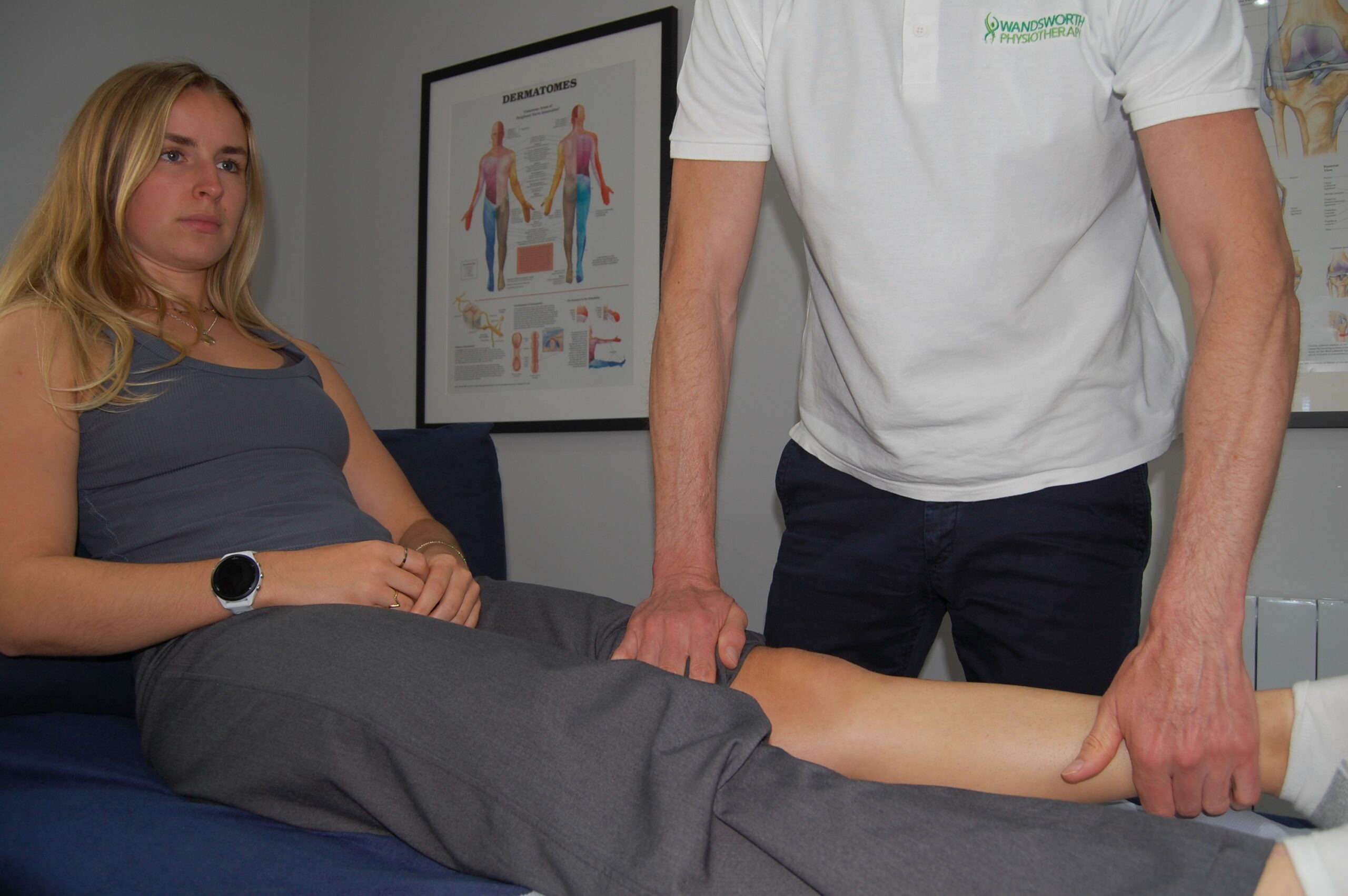
Does this describe you?
At Wandsworth physiotherapy and osteopathy our highly experienced physiotherapists treat people just like you and help them get back to what they love doing without the fear of further flare ups of hyper mobility or EDS pain.
Hypermobility Spectrum Disorders (HSD) and Ehlers-Danlos Syndromes (EDS) collectively represent a spectrum of connective tissue disorders with varying prevalence rates. HSD, characterised by joint hypermobility and associated symptoms, affects approximately 2% of the population, making it seem a relatively uncommon condition. However, the prevalence in orthopaedic and physiotherapy clinics is much greater, being up to 50% of patients. In contrast, Ehlers-Danlos Syndromes, a group of inherited connective tissue disorders, occur less frequently, with an estimated prevalence of 1 in 5,000 individuals.
These disorders exhibit notable demographic patterns, predominantly affecting more women than men, and especially more in Asian and African racial groups. The onset of symptoms often occurs in childhood or adolescence, although diagnosis may be delayed due to under-recognition or misinterpretation of symptoms and do tend to dimmish somewhat with age. Many patients can go years without coming to a diagnosis.


EDS encompasses 13 distinct types, each characterised by specific genetic mutations and clinical presentations. Among these, Hypermobility EDS (hEDS) and Classical EDS (cEDS) are the most common variants. Diagnosis of EDS requires the fulfilment of criteria outlined in the 2017 International Classification of the Ehlers-Danlos Syndromes, emphasising three domains: joint hypermobility, skin involvement, and systemic manifestations.
Domain 1 involves joint hypermobility and is assessed using standardised measures such as the Beighton Score, which evaluates the flexibility of specific joints. The scoring for the Beighton Scale is as follows:
The maximum score is 9 and a positive score children is 6 or more, for adults up to the age of 50 is 5 or more and those over 50 years of age 4 or more. There are problems with this score as it only involves a small number of joints, but it does give an indication. What can also be used is the 5-point hypermobility questionnaire. Ask your patient to answer the following:
Domain 2 involves skin, fascia, the pelvic floor and Marfin like symptoms. This may include hyperextensibility and fragility of the skin, and abnormal scarring. Systemic manifestations encompass a wide range of symptoms, including chronic pain, gastrointestinal dysfunction, and cardiovascular abnormalities as well as pelvic floor weakness and prolapse.
Domain 3 involves the absence of any other underlying heritable disorder of connective tissue including other variants of EDS.
Meeting criteria across all three domains strengthens the diagnostic accuracy of EDS.
Individuals with EDS often experience a myriad of signs and symptoms, reflecting the multisystem nature of the disorder. Joint hypermobility is a hallmark feature, predisposing individuals to recurrent joint dislocations, subluxations, and chronic musculoskeletal pain. Skin manifestations, such as hyperextensibility and easy bruising, result from abnormalities in collagen production and structure.
Beyond musculoskeletal and cutaneous manifestations, EDS can affect various organ systems, leading to gastrointestinal dysfunction, cardiovascular anomalies and postural tachycardia syndrome (POTS), and autonomic dysfunction. Chronic fatigue, cognitive impairment and mood disorders are also common among individuals with EDS, significantly impacting their quality of life.

Symptoms can often be picked up in children who have hypermobility including recurrent knee or shoulder dislocations, growing pains, fatigue, poor balance and proprioception, excessively pronated feet and POTS. Very young children may also have delayed developmental milestones. These issues can affect a child’s education and quality of life impacting school attendance and performance, the development of handwriting and reduced physical education and sport participation.
Although symptoms do perhaps reduce with age, EDS in adults can lead to pain from premature osteoarthritis, inflammatory joint diseases and osteoporosis as well joint and muscle pain.
Physiotherapy plays a pivotal role in the management of HSD and hEDS, aiming to improve joint stability, reduce pain, and enhance functional capacity. A multidisciplinary approach tailored to individual needs is essential for optimal outcomes. Key physiotherapy interventions include:
External support through taping and splinting can provide stability to hypermobile joints, reducing the risk of subluxations and enhancing proprioception. Kinesio taping and custom-made splints are often employed to support vulnerable joints while promoting optimal alignment.
Hydrotherapy offers a low-impact environment for exercise, facilitating joint mobilisation, muscle strengthening, and cardiovascular conditioning. The buoyancy of water alleviates gravitational stress on joints, making it particularly beneficial for individuals with hEDS who experience chronic pain and joint instability.
Strength exercises are crucial for improving muscle function and joint stability in individuals with HSD and hEDS. Emphasis is placed on weight bearing exercises to enhance muscle control and proprioception while minimising strain on hypermobile joints. Progressive resistance training, guided by a skilled physiotherapist, helps prevent muscle weakness and optimise functional capacity.
Additionally, manual therapy techniques such as soft tissue mobilisation and joint mobilisation may complement exercise interventions, addressing musculoskeletal pain and stiffness. Education on joint protection strategies, activity modification, and pacing is integral to empower individuals with HSD and hEDS to manage their condition effectively.
Trustindex verifies that the original source of the review is Google. I had back pain (which I initially thought was hip pain). My pain subsided with the exercises prescribed, and was a massive fan of Nuzhat Shaikh because she responded positively to my curiosity about human anatomy. I feel confident that I can manage my exercise load without aggravating my back, because I understand the signals my body is giving me better!Trustindex verifies that the original source of the review is Google. I had a great experience with my physiotherapy sessions. Shreya was knowledgeable, attentive, and tailored the treatment to my specific needs. I noticed real improvement after just a few sessions. Highly recommend for anyoneTrustindex verifies that the original source of the review is Google. I sought help from Wandsworth Physiotherapy (Khushboo in particular) to treat osteoarthritis in my knee. I was pleasantly surprised by how quickly the treatment took to start working. Khushboo customised her treatment and exercises to my capabilities and abilities. All in all a very positive experience. I would highly recommend WP.Trustindex verifies that the original source of the review is Google. Amazing sports massage! Helped with my ITB issues before a half marathon. The staff were lovely and very knowledgeable - would high recommend!Trustindex verifies that the original source of the review is Google. I am currently seeing Prarthi for slipped disc and sciatica related pain. Every session makes a difference and 3 weeks in and my pain and overall mobility is much better. Highly recommend.Trustindex verifies that the original source of the review is Google. Had the best session with Andreas. He’s understood my back pain issues and has suggested a treatment plan that is already paying off after just one session.Trustindex verifies that the original source of the review is Google. Helped fix my lower back pain last year, highly recommend.Trustindex verifies that the original source of the review is Google. I recently had a physio appointment with Shreya. She was very warm, friendly and professional. She managed to diagnose an issue with my shoulder, which I have had for many years. Following the suggested exercises there has already been a noticeable improvement.Google rating score: 4.9 of 5, based on 396 reviewsVerified by TrustindexTrustindex verified badge is the Universal Symbol of Trust. Only the greatest companies can get the verified badge who has a review score above 4.5, based on customer reviews over the past 12 months. Read more
How can we assist?